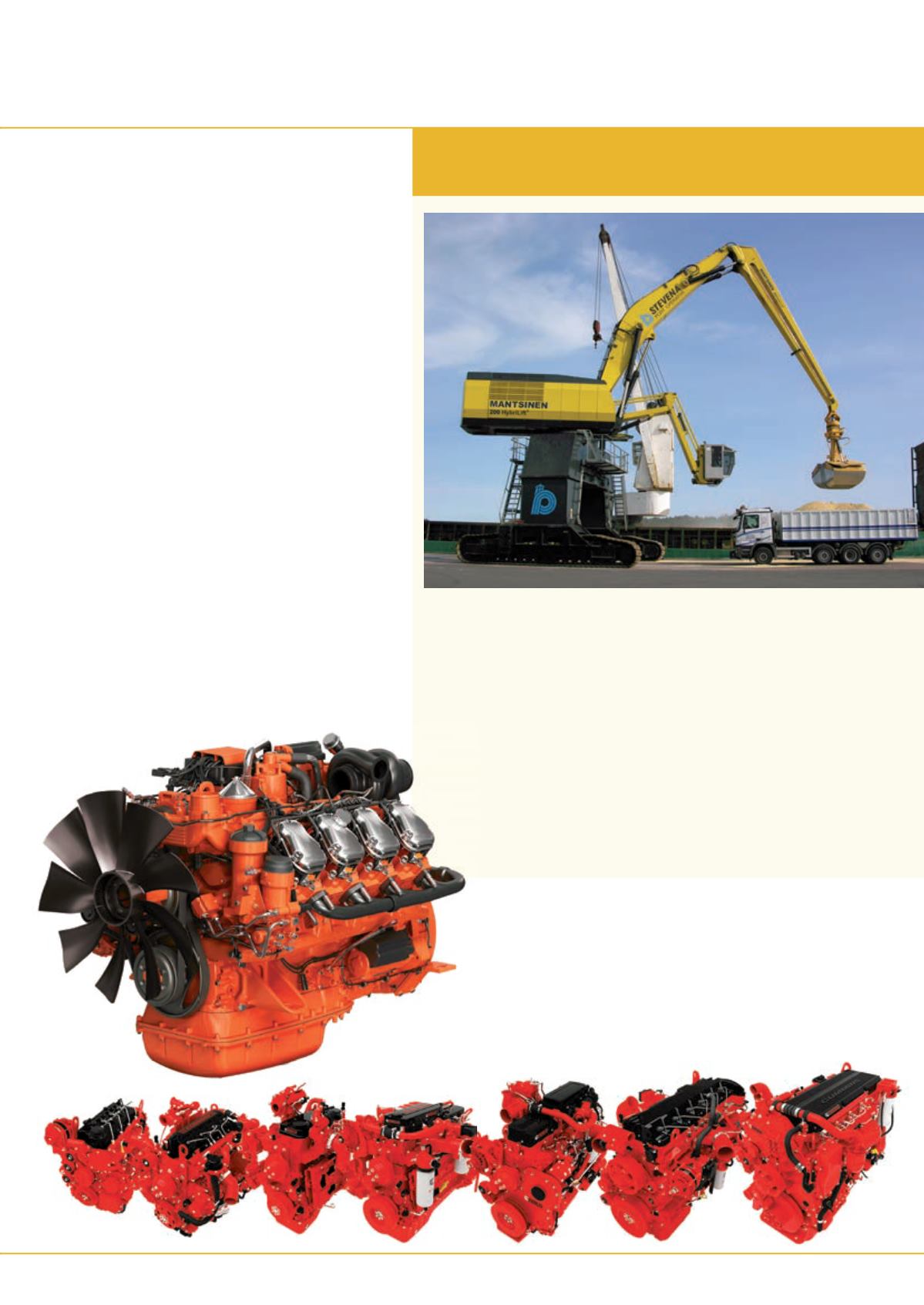
47
october 2014
international
construction
ENGINES
Emissions impact
>
nearly 200 years of combined experience in engine design and
development to the table.
Automotivemanufacturer Scania announced that its industrial
engineswere ready forEUStage IV in early2014. Itsnew engine
range has been developedwith EGR (exhaust gas recirculation)
and SCR (selective catalytic reduction) technology. Scania has
also opted for a non-DPF engine, which reduces the unit’s
footprint.
Available in 9-litre, 13-litre and 16-litre capacities, the new
Scania engines all have the same installation dimensions. Scania
said its new engines offeredhighuptime, generous torque at low
revs, good fuel economy and prompt engine response.
All threeengines feature the samecylinderdesign, and share the
same cylinder heads, replaceable liners andmany of themoving
parts, designed tomake them easy to repair andmaintain.
The DC09, DC13 and DC16 engines will be used in
agriculture, mining andmaterial handling equipment as well as
constructionmachines.
Field testing
Cumminshasrecentlycompletedatwo-yearfieldtestprogramme
on its Stage IV engines, logging 140,000 hours.
The manufacturer has put 70 machines to test, working
under tough duty cycles and extreme temperatures, to provide
an insight into engine performance ahead of the manufacturer
entering into full production.
Tests were carried out on wheeled loaders and excavators, as
well as specialised equipment such as a snow groomer working
at high altitude in the Alps, a container handler working long
hours in a port, and a rock drill working on amine site in very
dusty, abrasive conditions. Equipment was operated in the high
M
aterial handlermanufacturerMantsinen has selected Volvo Penta engines to power
its largest hydraulicmaterial handling cranes.
Threemodels ofMantsinenmaterial handling craneswill now come installedwith
Volvo Penta engines, including theMantsinen 120, 160 and 200, with deadweights of up to
130, 190 and 250 tonnes, respectively. The handlers offer amaximum reach from27m to
37m. Volvo Penta is providing its newStage IV 13-litre TAD1374VE (375 kW and 2,540Nm
torque) or the Stage II 16-litre TAD1643VE (565 kW and 3,287Nm torque) for the three crane
types.
“Wemade the switch to Volvo Penta becausewewere attracted to its quality, reliability
and excellent reputation,” said JukkaHämäläinen, vice president of business development at
Mantsinen.
“But its quick delivery timewas a key factor aswell.We have customers in Tier 4
final markets and in emergingmarkets, sowe need different kinds of engines at our
disposal. Volvo Pentamakes surewe can get the engineswe need right away so that
we don’t have to keep somany in stock.”
Engine switch
Volvo Penta chosenMantsinen cranes
humidity of Florida and the extreme cold of aCanadianwinter.
The results, according toCummins, are that enginecalibrations
and operating characteristics achieve high fuel economy and
better torque delivery. According to the field test, the new Stage
IV engines offer +10% lower fuel consumption compared with
that of their predecessors.
Jennifer Rumsey, vice president, engineering, Cummins
EngineBusiness, said, “With a verywide range ofmachine types
working at challenging on-site locations, Cummins application
Cummins Stage
IV engines logged
140,000 hours in
field tests.
Scania’s DC16 is one of three engines
with a common
cylinder design.


